Stories
Glory
1990-2004
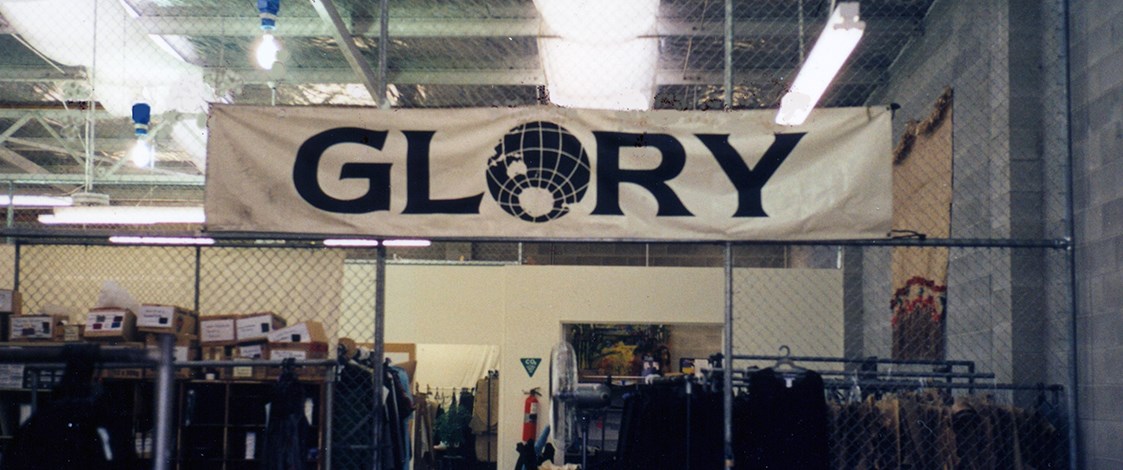
Teri Johnson’s path to Glory, her fashion label and Auckland boutique, was a circuitous one. After majoring in sculpture at the University of Canterbury Ilam School of Fine Arts in the early 1980s, she became involved with theatre and set design. In 1990, she forsook the worlds of the dramatic arts and academia for fashion and began producing a clothing range that would appeal to creative and independent women like herself.
She was no stranger to dressmaking. Her mother and her many aunts were all home sewers and one was a dressmaker who supported the family farm with her sewing. Teri started making her own clothes when she was about ten. She would get ideas from shops of what to make and how to sew it.
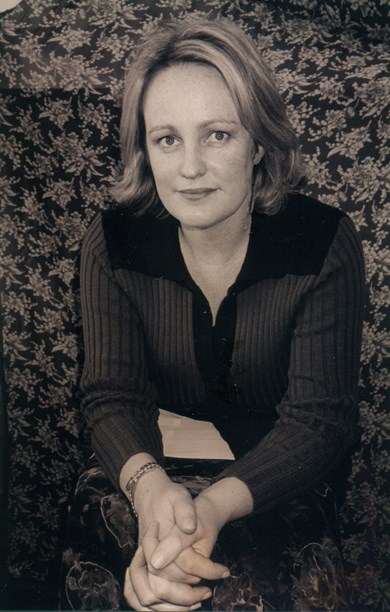
Teri Johnson, mid-late 1990s. Image © Teri Johnson.
Fashion was never far from her mind. As part of her Fine Arts Diploma, she made a series of works simplifying a walking-foot sewing machine into other forms. These included models sculpted from plaster and balsa wood, relating them to building materials, and a Claes Oldenburgh-inspired soft sculpture of stitched fabric.
Following her graduation, Teri moved from Christchurch to Auckland and a job as head of props (properties) at the Mercury Theatre. Among the productions she worked on were La Traviata, The Tales of Hoffman and A Streetcar Named Desire. It was in the wardrobe department at the Mercury that she met Suzanne Timpson, a graduate and former teacher at the NZ College of Fashion Design – where Teri would later do a pattern-making course – and the two became friends.
After leaving the Mercury, Teri and Suzanne shared an alternative workspace at the city workshops, an affordable and collegial collective of studios featuring different artists and small manufacturers. While Suzanne made clothing for individual clients, Teri freelanced as a set and costume designer and, between assignments, did some sewing for Rick Read who co-owned the Virus label.
In 1990, Teri and Suzanne decided to start their own fashion business. They took out a lease on a Ponsonby Road shop, previously occupied by Betsy Ruff (Jane Mabee),and opened the doors that September. They each had their own eponymous label and named the shop Glory.

For the first two years, Teri used her own name on her label. She then changed it to Glory. Image © Teri Johnson.
"Originally it was to be Glorybox," explains Teri, "referencing the glory-box (aka hope-chest) in which unmarried women stored special items for their hoped-for nuptials. I guess we were thinking treasures and feminine things. Then a friend asked if we still intended calling the shop Glory and the name just stuck."
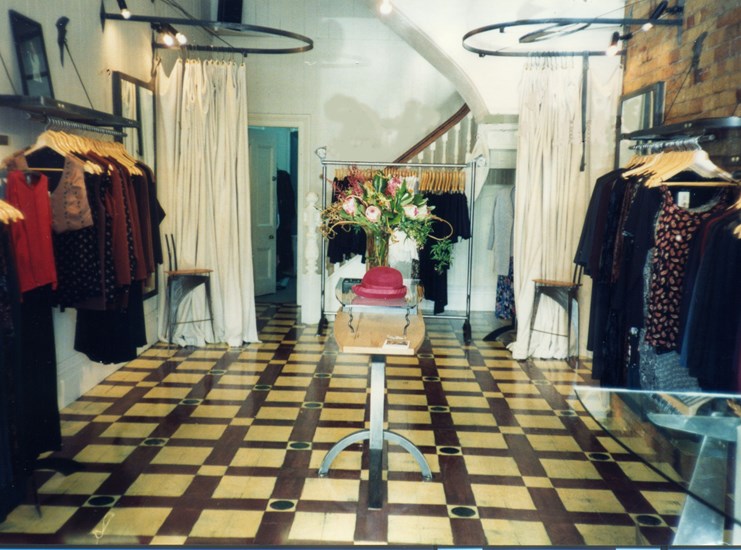
Interior Glory boutique, 122 Ponsonby Road, Auckland. Image © Teri Johnson.
As a newcomer to the business world, Teri says she was on a steep learning curve but an exciting one. "I learnt a lot from Suzanne and benefited from the experience of the many creative people who helped with photo shoots, publicity and such. The shop fit-out was done by sculptor Gary Hunt in his distinctive steel style. There was a huge metal chandelier and a large steel counter. We also had a steel shop sign in the window, with a globe of the world for the letter 'o'. An artist friend, James Kirkwood, designed and helped to paint the red and cream grid door. The mannequins were the Betsy Ruff originals with new bases."
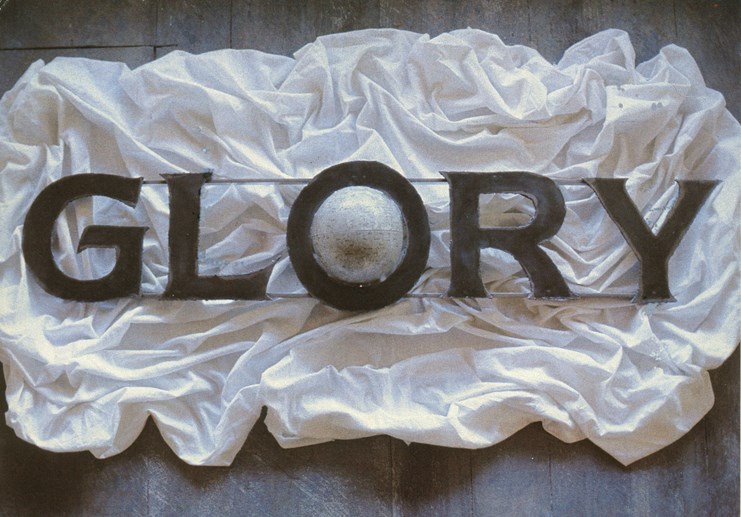
Postcard of steel Glory window sign designed by sculptor Gary Hunt. Image © Teri Johnson.
When Suzanne left the business after 18 months, Teri continued on her own and changed the name of her label from Teri Johnson to Glory.
Feminine and fluid summed up Teri’s design aesthetic. Nothing was ever cut too close to the body and the fabrics she worked with allowed for freedom of movement. Enamoured of viscose crepe early on, she then discovered viscose georgette which she used so prodigiously it became her signature. "I was an early starter in the crush georgette craze. I found a good supply of feminine florals that reminded me of girls’ bedroom wallpaper and they walked out the door." Teri sourced her printed georgettes from local textile wholesalers but when it came to plains she was more colour-specific, ordering them in from overseas each season. Over time, she sold thousands of crush georgette pieces, some of which are still in the possession of their original owners.
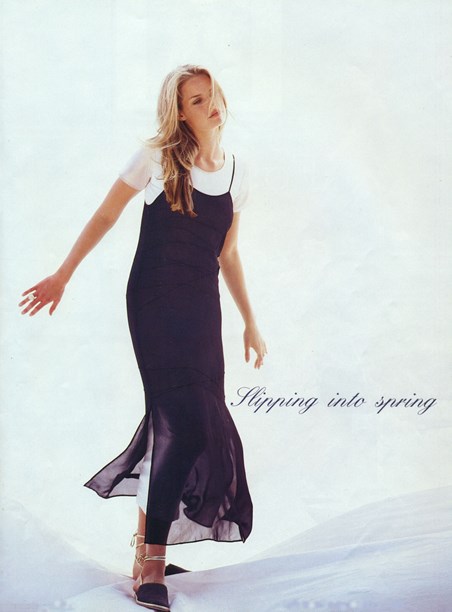
Glory viscose georgette slip dress and cotton Lycra dress with satin sleeves and piping. Fashion Quarterly, Spring 1994. Image © Fashion Quarterly.
One woman who has a dark blue crush georgette dress she purchased in the early 1990s and wears today with leggings, says of Glory in Ponsonby Road: "It was inspirational and aspirational. As students, my friends and I had limited budgets but when we could afford it we bought our clothes from there. They had a romantic, edgy and slightly vintage look that we really loved."

Layered look by Glory comprising a bias-cut viscose georgette slip over a jacquard skirt with reversed hem detail and a jacquard wrap top. Image © Teri Johnson.
There was always a hint of nostalgia for other eras in Glory’s collections. Whenever she was in London, Teri visited the legendary Angels Costumes, costume suppliers to the entertainment industry since 1840, and immersed herself in the exquisite detailing and prints from the 1930s, 1940s and 1950s. As no photography was allowed, she filled her head with ideas and sketched them later. She says her obsession with surface pin-tucking, often spiralling around a garment, came from a 1950s’ dress she saw there. "I believe we all have an artistic blueprint which gives us a distinct style. I was also drawn to a notion of Victorian and Edwardian dress but interpreted in a modern way. As a nostalgic reminder of getting dressed up myself as a young girl, I did a 'Sunday School' dress in each collection."
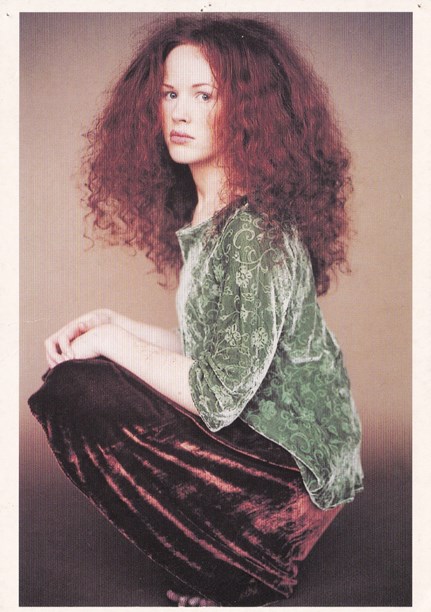
This Pre-Raphaelite-inspired postcard, featuring a bias-cut velvet skirt and burn-out velvet top, was styled and photographed by Carolyn Haslett.
Initially, all the manufacturing was done in a workroom above the shop but as the business grew it was expanded to include space above the adjoining Kokomo Hair Salon. In the mid-1990s, Teri opened a second Glory boutique in High Street and moved her manufacturing base to a large warehouse space in Grey Lynn. At its peak, Glory employed 23 people, including retail, and the label sold in fashion boutiques throughout New Zealand and was also available in Australia.
Over the years, Glory produced a series of postcards to give away to customers. Featuring garments from the current Glory collections, they were styled and photographed by Carolyn Haslett who also assisted Teri, a close personal friend, with fashion shoots and publicity.

Glory postcard styled and photographed by Carolyn Haslett.
Participation in the Corbans, later the Wella Fashion Collections helped raise the label’s profile. Teri says that for these shows she used her art training to develop distinctive looks that were based on loose themes. "By loose themes, I mean I would get a theme in my head that I didn’t research in great detail, but which focused my creativity." Points of reference included the movies Indochine, set in colonial French Indochina, and the Australian drama Picnic At Hanging Rock.
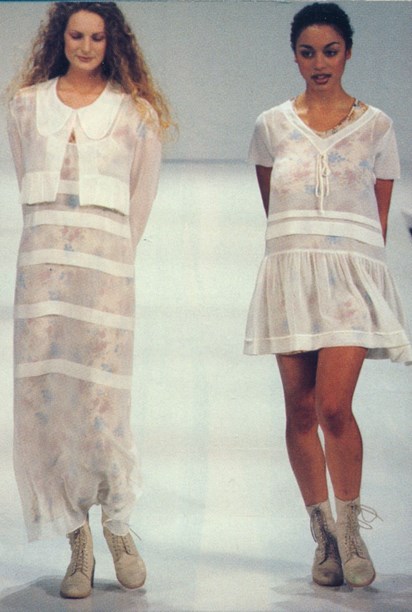
Corbans Fashion Collections, Downtown Convention Centre, Auckland 1994.
In 2004, Teri showed for the first time at New Zealand Fashion Week. But she says that although her collection generated renewed interest in Glory, particularly from Australia, she had reached the point where her heart wasn’t in it anymore. As well as running Glory, she had been studying towards a Master of Fine Art and Design at AUT and wanted to pursue other goals. The closure of the business came as a surprise to her many loyal clients.
With the Glory days behind her, Teri Johnson returned to Christchurch where she retrained as a technology teacher. She is currently teaching a mix of Food and Soft Materials Technology at Kirkwood Intermediate. She enjoys working with young people and hopes to develop again as an artist. In her home she has a large workroom and dabbles in private dressmaking.
Text by Cecilie Geary. Banner image of Glory workroom in Grey Lynn, Auckland. Image © Teri Johnson.
Last published October 2018.